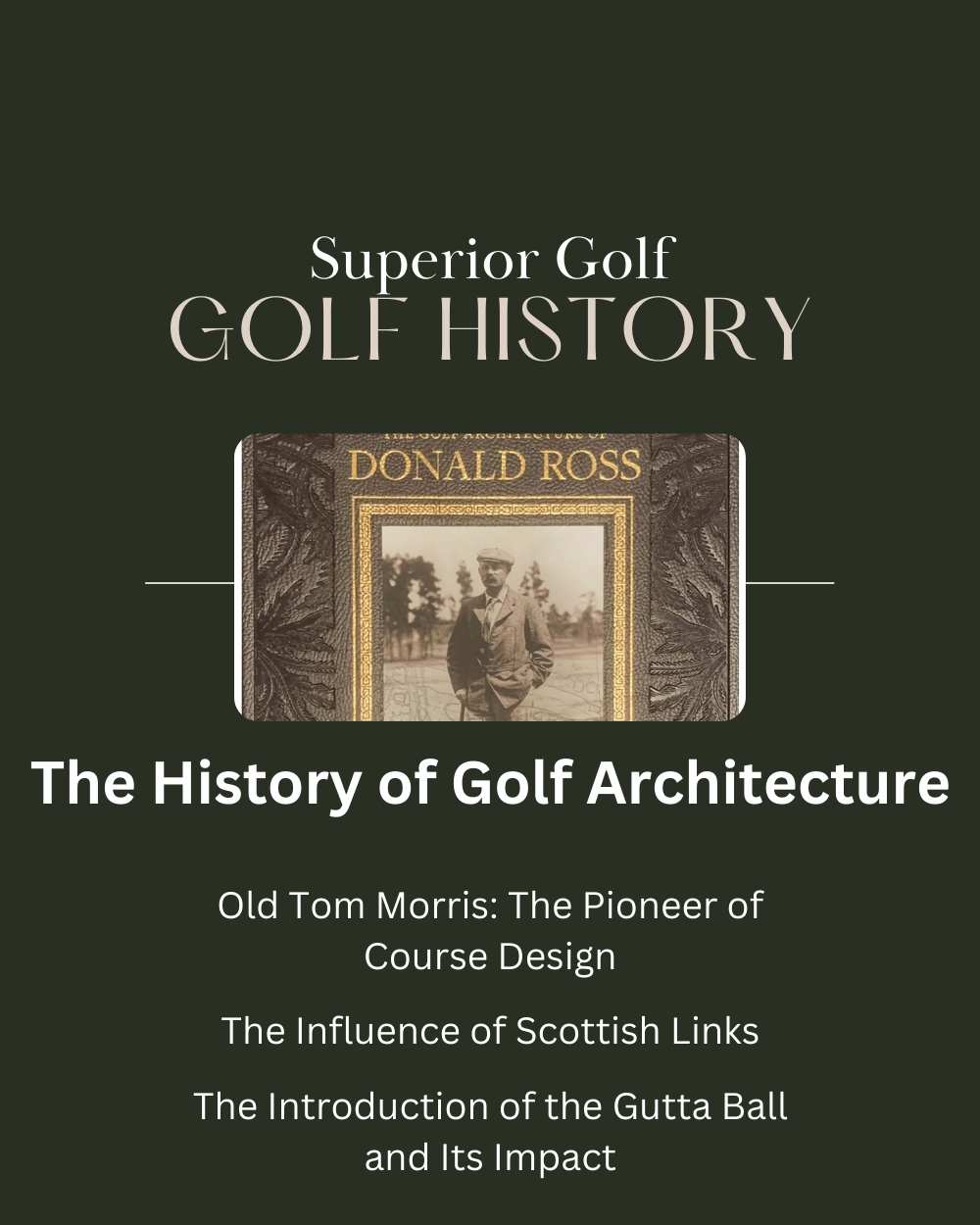The History of golf architecture is a journey through time. It combines technology advancements with cultural and economic changes. Iconic figures like Old Tom Morris were key to this story. They created legendary courses such as Prestwick and The Old Course at St. Andrews1.
Places like Lundin, Scotland, and Royal County Down in Northern Ireland show us how nature was woven into golf designs. These spots make the game even more enjoyable1.
The invention of the gutta ball was a turning point2. It changed how courses were made. Melvyn Hunter Morrow wrote about this era. His work shows how the gutta ball was critical for golf architecture1. As we explore golf’s architectural history, we see a shift from simple fields to complex courses. This shift showcases the creativity of the architects. They made these beautiful playgrounds a reality.
The History of Golf Architecture Key Takeaways
- The design history of golf courses mirrors technological, cultural, and economic changes over centuries.
- Iconic figures such as Old Tom Morris were pivotal in establishing legendary courses.
- Historical courses in Scotland and Northern Ireland highlight the integration of natural landscapes.
- The introduction of the gutta ball was a significant milestone, affecting design strategies.you are a golf enthusiast wondering about the landscape and history of the game, exploring the story of golf architecture is both enlightening and inspiring. li>
- Architectural innovations are crucial in transitioning from simplistic terrains to advanced and strategic courses.
Early Influences and Groundbreaking Architects
Golf architecture’s history is full of tradition and new ideas. The pioneers of course design set the stage for today’s golf courses. Their innovative designs changed how we play the game.
Old Tom Morris: The Pioneer of Course Design
Old Tom Morris is hailed as golf course design’s founding father. At Prestwick and Elie, he moved from simple to strategic designs. These designs demanded skill and strategy. Morris’s work shows in modern courses’ blend of challenge and beauty, showing true golfing skill.
The Influence of Scottish Links
Scottish links courses like Machrihanish show how golf uses the natural landscape. These courses blend naturally with their environment, keeping the game’s spirit alive. Their design trends have influenced worldwide golf course design, changing how courses evolve.
The Introduction of the Gutta Ball and Its Impact
The gutta ball’s arrival was a turning point for golf design. It led architects to rethink their designs due to the ball’s new flight characteristics. Designers like Harry Hunter and Herbert Fowler redesigned hazards, fairways, and greens. This change deeply influenced course design’s future.
The early days of golf design saw huge changes, thanks to figures like Old Tom Morris and Scottish links. With the gutta ball’s introduction, these changes shaped future innovations. This pushed golf course design to keep evolving.
Architecture in the Golden Age of Golf
The Golden Age of golf architecture was from the 1910s to the 1930s. It was marked by artistic movements and big technological leaps. Famous architects like Charles Blair Macdonald and Alister MacKenzie changed golf course design forever.
They created courses that fit right in with nature, making for challenging yet beautiful games. This period is known for its natural and strategic course designs.
The Role of Arts and Crafts Movement
The Arts and Crafts movement had a big impact on golf courses in this era. It focused on craftsmanship and nature, leading to designs that felt part of the landscape. Architects, including Harry Colt, followed this idea, designing beautiful and tough courses.
Examples of Colt’s work can be seen at Royal Portrush and Royal Liverpool Golf Club. His designs merged naturally with the landscape, showing off his naturalism.
Harry Colt and the Emergence of Naturalism
Harry Colt made major contributions during this time. He, along with Alister MacKenzie and Seth Raynor, used the land’s natural shapes to make interesting courses.3
This approach set the stage for classic golf design, mixing strategic play with the land’s beauty. Many of their courses are still highly regarded today3.
Influence of Global Trends: Railroads and Industrialization
Railroads and industrial growth greatly influenced golf architecture. They gave architects access to new places, leading to a surge in golf course building. By 1930, the US had nearly 6,000 golf courses3.
Alister Mackenzie and Donald Ross could work internationally thanks to railroads. Ross is known for his extensive work in the US.
These changes made it easier to build courses that fit the natural landscape. The move from horse power to modern engineering marked a new era in golf design3.
This mix of art and technology created timeless golf courses. These courses are still benchmarks in the sport today.
| Architect | Notable Courses | Influences | Key Contributions |
|---|---|---|---|
| Harry Colt | Royal Portrush, Royal Liverpool | Arts and Crafts movement | Naturalism in design |
| Alister MacKenzie | Royal Melbourne, Cypress Point | Global influences | Strategic golf design |
| Donald Ross | Pinehurst No. 2, Oakland Hills | Industrialization impacts | Blend of artistry and technique |
Artistic and industrial forces combined to create a legacy of great courses in the Golden Age of golf architecture. For more info, check out Hacienda Golf Club and Golf Club Atlas.
Conclusion
The story of golf course design is not just interesting but shows how culture and technology have shaped it. Starting in Scotland, it has grown into a beautiful craft. Today, we see amazing courses that honor tradition and strive for greatness. The use of early sketches and modern technology together highlights this balance4.
The history of golf design is big. Figures like Old Tom Morris and the classic Scottish links have deeply influenced it5. Books in the “Very Short Introductions” series reveal how certain styles and materials have changed golf course design5. Learning about these old influences helps us see the beauty in golf courses today.
Looking back is as important as looking forward in golf design. The wisdom from past courses fuels ideas for new ones. Designers aim to make courses that are challenging yet beautiful, blending skillfully into their surroundings5. The mix of handmade designs with new technology helps achieve this balance4.
For more on this subject, check out some great reads on Oxford Academic. Or, dive deeper with McAlpine House. These sources give a wider view on golf course architecture’s past and present.
FAQ
Who is considered the pioneer of golf course design?
How did Scottish links courses influence modern golf architecture?
What impact did the introduction of the gutta ball have on course design?
What was the role of the Arts and Crafts movement in golf course design?
How did Harry Colt contribute to the evolution of golf course design?
What global trends influenced the evolution of golf course architecture?
How did golf course design evolve with technology and cultural changes?
Source Links
- https://golfclubatlas.com/architecture-timeline/
- https://thefriedegg.com/golf-architecture-past-present-and-future/
- https://www.haciendagolfclub.com/blog/what-is-the-golden-age-of-golf-course-design
- https://www.mcalpinehouse.com/2013/10/drawing-to-a-conclusion-the-art-of-architecture-part-1/
- https://academic.oup.com/book/912/chapter/135493296

